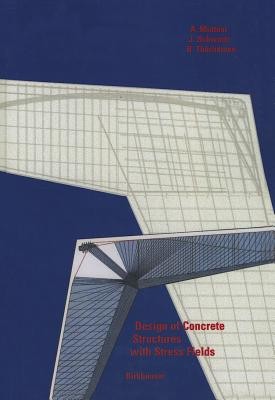
- We will send in 10–14 business days.
- Author: Aurello Muttoni
- Publisher: Birkhäuser
- ISBN-10: 3034898851
- ISBN-13: 9783034898850
- Format: 17.4 x 24.6 x 1 cm, minkšti viršeliai
- Language: English
- SAVE -10% with code: EXTRA
Reviews
Description
17 2 STRESS FIELDS FOR SIMPLE STRUCTURES 2. 1 INTRODUCTION In this chapter the behavior and strength of simple structures made of rein- forced or prestressed concrete is investigated with the aid of stress fields. In particular, the webs and flanges of beams, simple walls, brackets, bracing beams and joints of frames are investigated. By this means, the majority of design cases are already covered. In reality, all structural components are three-dimensional. Here, however, components are considered either directly as two-dimensional plate elements (i. e. the plane stress condition with no variation of stress over the thickness of the element) or they are subdivided into several plates. Since two-dimensional structural elements are statically redundant, it is pOSSible for a particular loading to be in equilibrium with many (theoretically an infinite number of) stress states. If the lower bound method of the theory of plasticity is employed, then an admissible stress field or any combination of such stress fields may be selected. In chapter 4 it is shown that this method is suitable for the design of reinforced concrete structures, and the consequence of the choice of the final structural system on the structural behavior is dealt with in detail. The first cases of the use of this method date back to Ritter [6] and Morsch [4], who already at the beginning of the century investigated the resultants of the internal stresses by means of truss models.
EXTRA 10 % discount with code: EXTRA
The promotion ends in 23d.20:58:16
The discount code is valid when purchasing from 10 €. Discounts do not stack.
- Author: Aurello Muttoni
- Publisher: Birkhäuser
- ISBN-10: 3034898851
- ISBN-13: 9783034898850
- Format: 17.4 x 24.6 x 1 cm, minkšti viršeliai
- Language: English English
17 2 STRESS FIELDS FOR SIMPLE STRUCTURES 2. 1 INTRODUCTION In this chapter the behavior and strength of simple structures made of rein- forced or prestressed concrete is investigated with the aid of stress fields. In particular, the webs and flanges of beams, simple walls, brackets, bracing beams and joints of frames are investigated. By this means, the majority of design cases are already covered. In reality, all structural components are three-dimensional. Here, however, components are considered either directly as two-dimensional plate elements (i. e. the plane stress condition with no variation of stress over the thickness of the element) or they are subdivided into several plates. Since two-dimensional structural elements are statically redundant, it is pOSSible for a particular loading to be in equilibrium with many (theoretically an infinite number of) stress states. If the lower bound method of the theory of plasticity is employed, then an admissible stress field or any combination of such stress fields may be selected. In chapter 4 it is shown that this method is suitable for the design of reinforced concrete structures, and the consequence of the choice of the final structural system on the structural behavior is dealt with in detail. The first cases of the use of this method date back to Ritter [6] and Morsch [4], who already at the beginning of the century investigated the resultants of the internal stresses by means of truss models.


Reviews